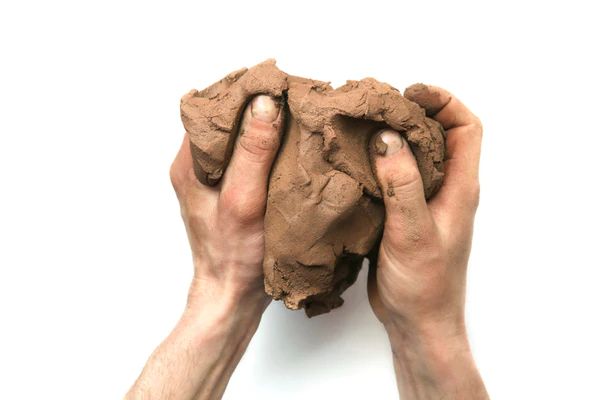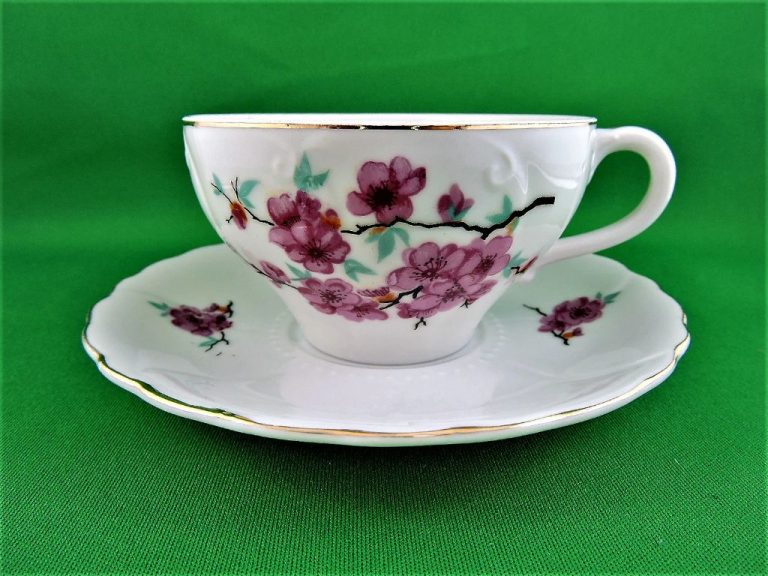What Does Clay Mean In The Bible?
Clay is frequently mentioned in the Bible as a metaphor and symbol of humanity’s frailty and God’s creative power. The Bible uses the imagery of a potter working with clay to demonstrate how God is actively shaping people and molding circumstances. Just as clay is a pliable material in a potter’s hands, humans are depicted as impressionable and changeable in God’s hands.
The word “clay” appears over 30 times in the Bible. It is often used figuratively to represent human weakness and moral imperfection in comparison to the supremacy and sovereignty of God. Yet despite its humble and fragile nature, clay becomes useful and beautiful when shaped by a potter’s skilled hands. This emphasizes how God takes flawed people and transforms them into something special and purposeful.
Overall, references to clay in Scripture teach that while humans are weak creatures prone to sin, God patiently molds them to fulfill His purposes. The Bible encourages submission and obedience to God’s will, allowing Him to shape people for His glory.
Clay as Frail Humanity
In the Bible, the image of clay is often used to represent human frailty and imperfection in contrast to God’s power and perfection. The metaphor is based on the common material that clay was during biblical times – something pliable, easily broken, and ordinary. As the prophet Jeremiah proclaimed, “We are the clay, you are the potter; we are all the work of your hand” (Jeremiah 18:6). The verse illustrates how humanity is frail, imperfect, and subject to the will of God the potter who fashions and shapes us.
The New Testament continues this imagery, with Paul stating “But we have this treasure in jars of clay to show that this all-surpassing power is from God and not from us” (2 Corinthians 4:7). Here, Paul argues that God grants His power and truth to fragile, imperfect humans. Our human weakness highlights God’s surpassing power at work through us. Overall, the metaphor of clay powerfully reinforces humanity’s humble status in relation to the glory and perfection of God. It serves as an important reminder that all human achievements ultimately pale in comparison to the Creator.
Source: Jars of Clay: `Humanity is a frail thing’
Clay as Material for God’s Creation
The first mention of God using clay in the Bible is when God formed man from the dust of the ground in Genesis 2:7. This verse reads: “Then the Lord God formed a man from the dust of the ground and breathed into his nostrils the breath of life, and the man became a living being” (Genesis 2:7). This illustrates that man was created from the humblest of materials – clay from the earth.
Later in Genesis 2:7-9 it goes into more detail: “Then the Lord God took dust from the ground and formed a man from it. He breathed the breath of life into the man’s nose, and the man became a living person” (Genesis 2:7-9). This shows how God personally shaped clay into the form of a man and brought him to life.
This molded clay represents the frailty of humanity, but also shows God’s personal care and effort in creating man. It highlights God’s power to create something living from basic materials. The dust reminds us of human mortality and origins, while the breath of life shows God imparting something divine.
Vessels of Clay
In the Bible, clay jars and vessels are sometimes used symbolically to represent humanity’s frailty and God’s power. One example is 2 Corinthians 4:7 which says, “But we have this treasure in jars of clay to show that this all-surpassing power is from God and not from us.” Here the “treasure” refers to the gospel message and ministry, while the “jars of clay” represent the imperfect human messengers who carry this treasure.
The frailty of the clay jar contrasts with the immeasurable value and power of the treasure within it. This illustrates that God chooses to use ordinary, flawed people to accomplish His will. The power comes from God rather than the vessel itself.
Another reference is in Jeremiah 18, where the prophet visits a potter’s house. As the potter molds the clay into shape, the vessel is marred and he reworks it into something new, demonstrating God’s sovereignty over human affairs. Just as clay is shaped and reshaped in a potter’s hands, God molds circumstances and people according to His purposes.
Overall, vessels of clay emphasize that followers of God have no strength in themselves. Any spiritual power or capacity comes from God’s Spirit within them, not their own merits. The fragility of clay jars highlights how God uses the unlikely to glorify Himself (Source).
Clay Used for Healing
Clay has been used for healing and medicinal purposes throughout history. In the Bible, there are a few notable instances of clay being used to heal the sick. One example is when Jesus heals a blind man by making a mud mixture using his saliva and dirt from the ground and putting it on the man’s eyes (John 9:6-7). This act of making a clay poultice and using it to heal blindness shows that even in biblical times, the healing properties of clay were known.
According to https://drpaulamcdonald.com/jars-of-clay/, clay contains minerals that can draw out toxins and infections from the skin and body. Specific types of clay like bentonite clay are especially known for their ability to absorb toxins. So when Jesus made a clay mixture using the dirt from the earth, it likely had absorbent and healing properties that aided in curing the man’s blindness when applied to his eyes.
The biblical account of Jesus healing with clay demonstrates that even thousands of years ago, clay was recognized for its medicinal benefits. Sprinkled throughout the Bible, we find evidence of clay’s therapeutic uses that modern science is now revalidating.
Clay Tablets
Clay tablets were one of the earliest forms of writing material used in ancient Mesopotamia and the Mediterranean. According to the Encyclopedia of the Bible, clay tablets were commonly shaped like a shredded wheat biscuit and used for recording important historical information.
The Bible references clay tablets in several places. Most notably, the Ten Commandments were originally written by God on two stone tablets (Exodus 31:18). These tablets were later smashed by Moses when he became enraged by the Israelites worshipping the golden calf (Exodus 32:19). God then commanded Moses to carve two new stone tablets to rewrite the Ten Commandments (Exodus 34:1).
Clay tablets were an early form of writing material that was sturdy and allowed for preserving information over long periods of time. The Bible highlights their usage for recording important laws, commandments, and covenants between God and His people.
Clay Seals
Clay seals were used in ancient times to secure the knots tied around rolled or folded documents, similar to wax seals today. The seals served to authenticate the documents they were attached to. Clay seals impressed with identifying marks have been discovered by archaeologists in abundance in the Middle East.
In 2022, dozens of First Temple-period clay seals were discovered near Jerusalem’s Temple Mount bearing impressions of ancient Hebrew names, including royal steward “Achiav ben Menachem,” mentioned in 2 Kings. These seals likely sealed papyrus documents over 2,600 years ago (Clay Seals Inscribed with Biblical Names Found in Jerusalem).
The Bible contains references to clay seals being used to secure documents. For example, Job 38:14 says, “The earth takes shape like clay under a seal; its features stand out like those of a garment.” This poetic verse compares the defining features of the earth to the impression made by a seal in clay.
Clay in Prophesies
Clay is sometimes used in prophetic visions to symbolize the malleable and fragile nature of humanity. The prophet Jeremiah records a vision in which God tells him to go to the potter’s house where he sees the potter working a lump of clay (Jeremiah 18:1-6). God explains that the clay represents Israel, who has strayed from God’s commands. Just as the potter can reshape the clay into whatever form he desires, so too can God reshape and reform His people if they turn from their wicked ways.
The prophet Daniel interprets King Nebuchadnezzar’s dream about a statue made of various materials, with feet of iron mixed with clay. Daniel explains that the feet of iron and clay represent a divided kingdom that will be partly strong and partly brittle (Daniel 2:31-45). The mixture of clay and iron suggests the fragility and weakness of human rule in the face of God’s eventual kingdom.
Daniel himself has a vision of four beasts, the last of which has ten horns. A little horn emerges and grows, knocking off three of the other horns. Daniel sees the Ancient of Days take His throne, then the last beast is destroyed and given over to be burned (Daniel 7:1-14). The changing beastly kingdoms are depicted as malleable as clay, while God’s rule is strong as iron.
Overall, clay used in prophetic visions highlights the temporary and feeble nature of human kingdoms in contrast to the permanence and strength of God’s eternal kingdom. The pliability of clay represents both the potential for reform and the fragility of human authority.
Clay Metaphors
The Bible often uses clay as a metaphor to illustrate God’s sovereignty and human frailty. One of the most well-known metaphors is of God as the potter and humans as the clay. This metaphor appears in several passages, such as Isaiah 64:8 which states, “Yet you, Lord, are our Father. We are the clay, you are the potter; we are all the work of your hand.” This depicts God as actively molding and shaping humanity according to His purposes (source: https://www.bibletools.org/index.cfm/fuseaction/topical.show/RTD/cgg/ID/2684/Potter-Clay-Analogy.htm).
The metaphor of humans as clay emphasizes our humble origin from the dust of the earth, as well as our dependence on God as our Creator. Just as clay is fragile and moldable, humanity is weak and dependent on God for strength and sustenance (source: https://medium.com/insufficient-faith/the-potter-and-the-clay-6d5e7f19cbe6). Yet in the hands of a skilled potter, clay can be shaped into beautiful and useful vessels. This illustrates humanity’s potential for righteousness when yielding to God’s shaping work in our lives.
Conclusion
Throughout the Bible, clay is used as a symbol in various ways. It represents frail humanity, formed by God’s hand yet imperfect and prone to sin (Clay Meaning – Bible Definition and References). Clay serves as the substance from which God fashions his creations, from mankind to simple vessels and objects. As the potter molds clay into shape, God forms and guides humanity according to his purposes. Vessels made of clay, such as jars and tablets, appear throughout scripture as both ordinary items and metaphors. The fragility of unfired clay represents the impermanence of human life. Yet God also promises to remake flawed humanity like a potter reforms a damaged vessel (Jeremiah 18). Overall, Biblical references to clay focus on God’s sovereignty, mankind’s frailty, and the potential for redemption.



